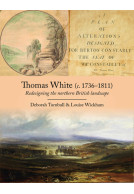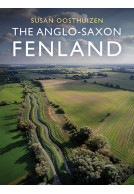A Medieval Life (Paperback)
William de Felton and Edlingham Castle, 1260–1327
Imprint: Windgather Press
Pages: 368
Illustrations: 60 b/w and color illustrations
ISBN: 9781914427435
Published: 21st February 2025
Script Academic & Professional
Pages: 368
Illustrations: 60 b/w and color illustrations
ISBN: 9781914427435
Published: 21st February 2025
Script Academic & Professional
You'll be £49.95 closer to your next £10.00 credit when you purchase A Medieval Life. What's this?
+£4.99 UK Delivery or free UK delivery if order is over £40
(click here for international delivery rates)
Order within the next 1 hour, 58 minutes to get your order processed the next working day!
Need a currency converter? Check XE.com for live rates
(click here for international delivery rates)
Order within the next 1 hour, 58 minutes to get your order processed the next working day!
Need a currency converter? Check XE.com for live rates
A Medieval Life: William de Felton and Edlingham Castle, 1260–1327 is a biography of a little-known man living in late thirteenth- and early fourteenth-century Britain. William’s precise birth and death dates are unrecorded, his place of origin has for a long time been unclear, and his parentage is still uncertain. Although somewhat wealthy and privileged, William does not represent either the high aristocracy or the ‘great and the good’ of his time, and a central theme of this book is how to write a biography of someone relatively anonymous in the Middle Ages. There are plenty of books about kings, queens and battles; this book offers a different perspective.
Its origin lies in archaeological excavations between 1978 and 1982 at Edlingham, Northumberland. The first house here, which grew to be called a castle, was built in the years around 1300. It was abandoned before the 1660s after less than four centuries of habitation, and nearly three centuries before it was uncovered by excavation. This book is not an excavation report, however, nor an architectural survey, but an attempt to ‘excavate’ the buried and concealed life of the castle’s founder, and to understand the unusual building he created. It is a biographical approach to history framed by archaeological and landscape perspectives: the biography of one man, which illuminates the lives of those around him and serves as a biography of a place and landscape.
William de Felton’s story can be told because he was unexpectedly well documented. His career as a middle-ranking servant in the royal households of Edward I and Edward II, combined with the bureaucratic habits of the king’s clerks, has bequeathed to historians two hundred documents that mention him. These documents are often individually banal, but taken together, and with other documentary evidence for William’s family, neighbours, friends and colleagues, they enable a reconstruction of his life. They show us William as husband and father, as a landowner, and as a traveller moving with the king’s armies and household from his native Shropshire, widely around England, into Wales, France, Flanders and Scotland, perhaps slightly contrary to the idea that medieval people travelled little. William began his career as an usher in the king’s bedchamber, and for many years was a soldier during Edward I’s ‘forever wars’, the early attempt to create by force a single nation on the British islands. He was an administrator or governor of occupied territories in Wales and Scotland, and later a local official in his adopted Northumberland. He was also a builder, notably for the king in Gascony and other places, but also in his own right, at Edlingham Castle, the centre-piece of this book, now an English Heritage public property.
Customers who bought this title also bought...
Other titles in Windgather Press...
















